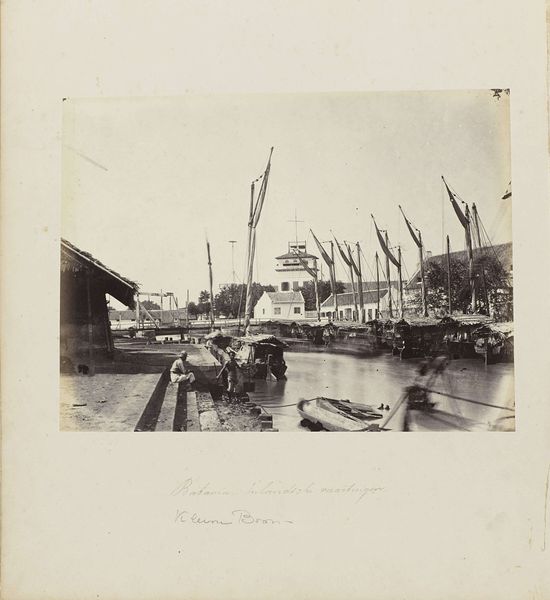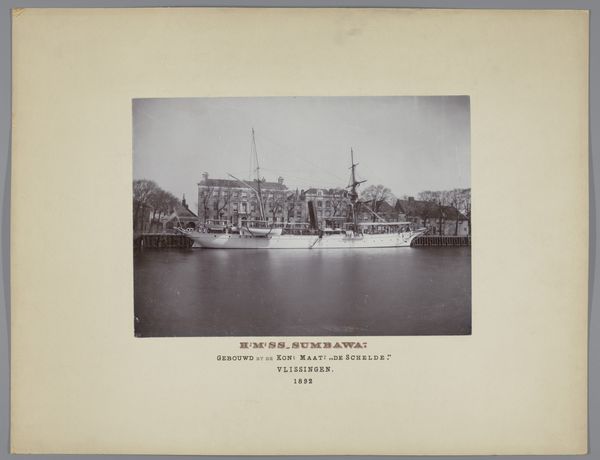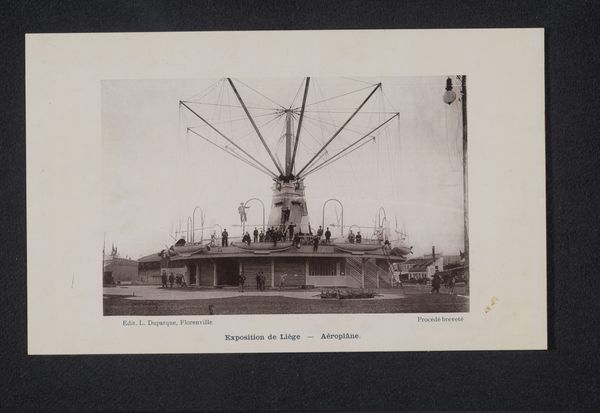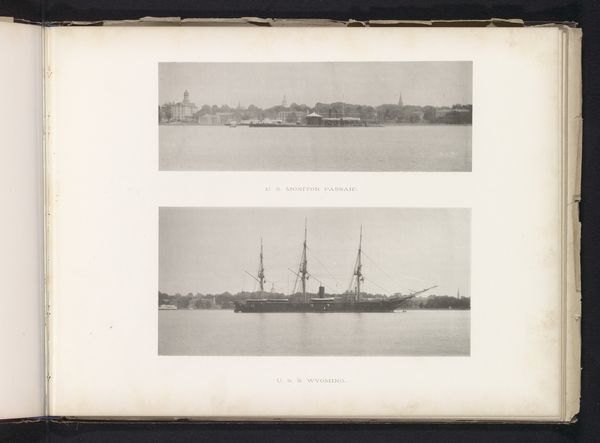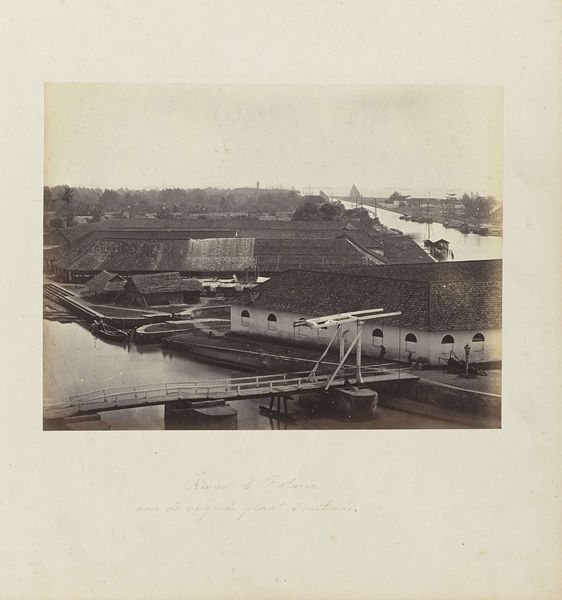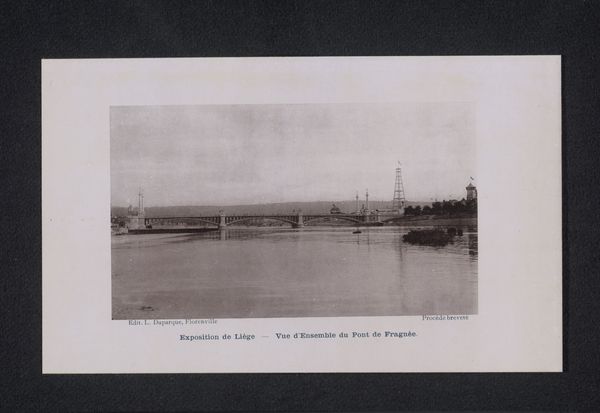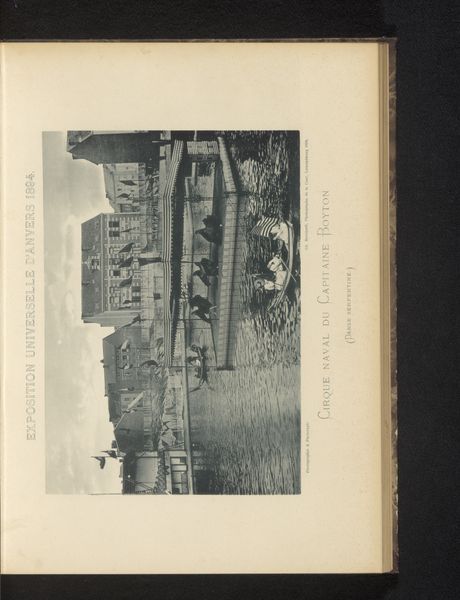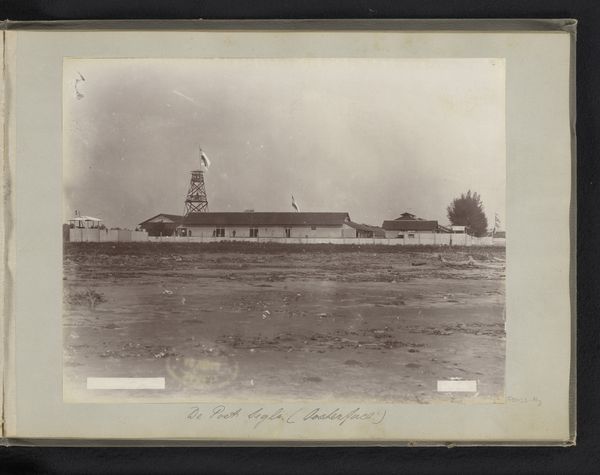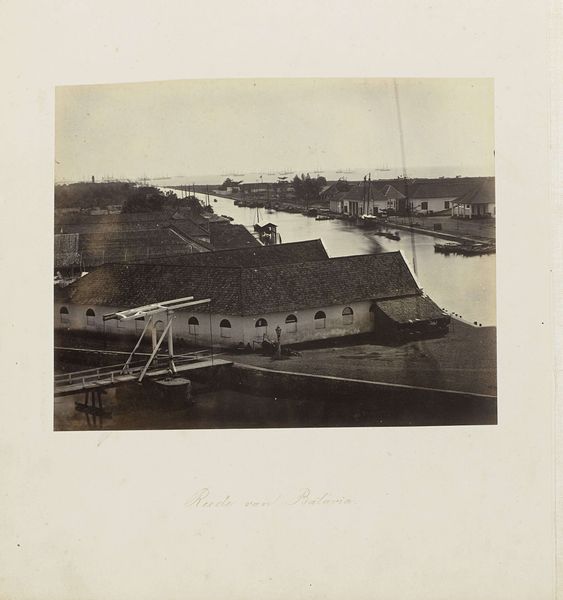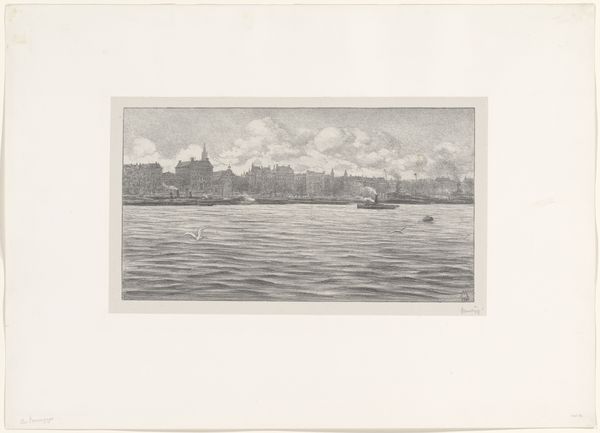
photography, gelatin-silver-print
#
aged paper
#
landscape
#
photography
#
orientalism
#
gelatin-silver-print
#
cityscape
Dimensions: height 180 mm, width 232 mm
Copyright: Rijks Museum: Open Domain
Curator: Here we have "Uijtkijk, Batavia," a gelatin-silver print created sometime between 1863 and 1866 by Woodbury & Page. It's a landscape showcasing a waterway and a Dutch colonial building, now part of the Rijksmuseum collection. Editor: Immediately, I notice the almost ghostly stillness of the water. It’s reflecting everything above like a mirror, creating a doubling effect that feels very dreamlike and maybe even a bit melancholy. Curator: That's a great observation. The tranquility could stem from the inherent nature of photography itself, designed to freeze a specific moment. But let's also consider Batavia, modern day Jakarta, in that era. Photography, during the mid-19th century in the Dutch East Indies, became inextricably tied to colonial administration and its portrayal of empire. Editor: The composition guides the eye deliberately. That watchtower-like structure looming over the more modest architecture; it is powerful symbolism. I see both Dutch ambition and this ever-present assertion of power interwoven into the very scene itself. I cannot help but read some sense of cultural and political tension into this relatively straightforward cityscape. Curator: Exactly. Photography wasn't merely capturing images. It actively shaped and reinforced colonial narratives of control, and that is critical to our reading of it today. Editor: And within that historical framing, what meanings would viewers at the time, both European and local, have drawn from these specific structures? I wonder, beyond the assertion of authority, what other anxieties or aspirations are lurking in this image? Curator: It makes you contemplate the silences, doesn't it? It invites us to read into the unspoken relationship of colonizer and colonized. These commercial images normalized an unequal world view, framing an empire. Editor: Seeing this image through today’s eyes, allows one to begin unraveling those historical and ideological threads interwoven within seemingly neutral aesthetics. It leaves you with a very poignant feeling to consider all these visual imprints of that past still carried and echoed now. Curator: Absolutely, and reflecting on the layering of the historical narrative can transform a serene scene into something with unsettling tension, showing the lasting influence of such art.
Comments
No comments
Be the first to comment and join the conversation on the ultimate creative platform.
